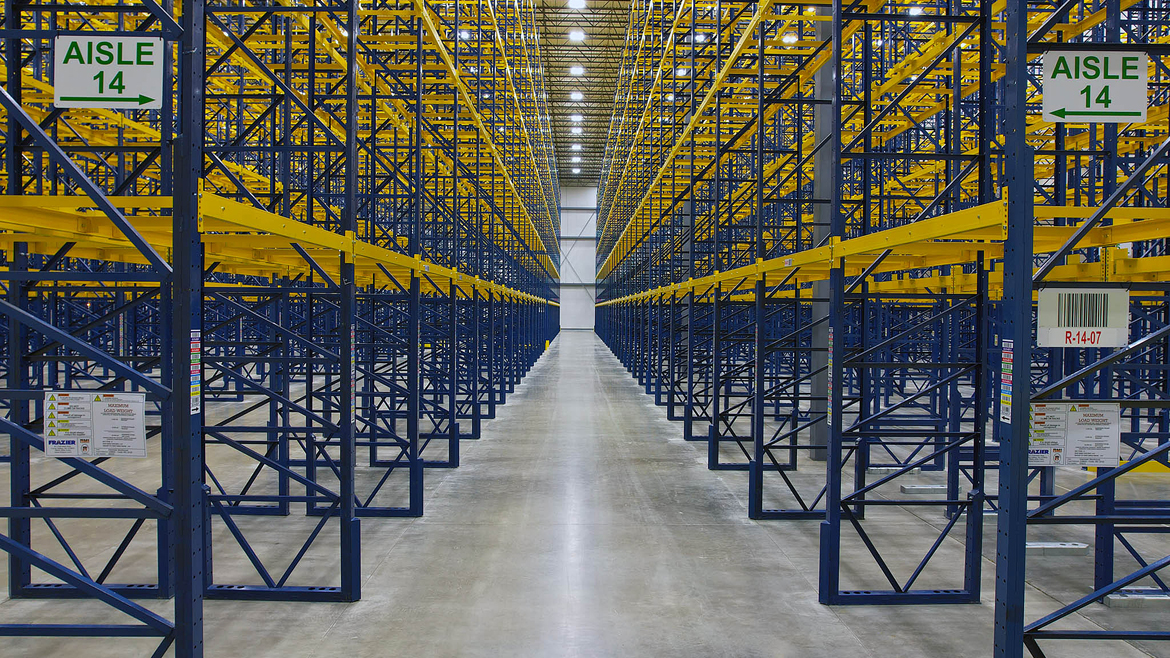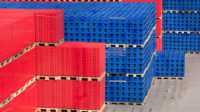Following a record-setting year for new cold storage developments, strengthening and solidifying the U.S. cold supply chain will continue in 2024, through growth and innovation.
“We think of cold storage as critical infrastructure to the United States and to the globe,” said Jason Fincher, vice president of strategy and logistics as Cold Summit Development, a real estate company who develops and owns cold storage projects in five states. “It’s so necessary to sustain the food chain that you have to have it working and in the right locations.”
Globally, the cold storage construction market is projected to reach over $32 billion by 2030, growing at a CAGR of 13.6%, according to Research and Markets, a research and data firm. The United States is expected to lead in cold storage construction with China, the world's second largest economy, Japan, Canada and Germany among the international markets forecast to grow at double-digit CAGRs.
Demand for cold storage space is expected to continue outstripping supply over the next three to five years, according to national real estate firm CBRE, with over 3.3 million square feet of speculative cold storage development under construction in the U.S. by the end of 2022, up from just 300,000 square feet in 2019.
Investor interest in cold storage also increased during the pandemic. Nearly 40% of respondents to CBRE's 2022 U.S. Investors Intention Survey pursued cold storage assets in 2023 up from 22% in 2021 and 7% in 2019.

Throughout the last few years, retailers and manufacturers scrambled to ensure their product had room in cold storage warehouses, allowing multiple cold storage companies to grow their business.
“As we move into 2024, I think some of the major challenges will be with all the space coming online from the cold storage boom there will be customers that start to move their product around for many different reasons like transportation, logistics, pricing, and customer service,” said John Tippmann, III, executive vice president of Tippmann Group/Interstate Warehousing, the fourth largest public refrigerated warehouse company in the United States. “There is still a lot of pent-up demand out there for cold storage space. Although I think a lot of warehouses have been full for the past five years, I think some vacancy will start to come online in the years to come.”
Over the past two years, R&FF profiled over a dozen markets in its Hot Cities for Cold Storage series, highlighting growth in key regions throughout the U.S., including the ports of Miami, Oakland, Long Beach, Savannah, Mobile, Alabama, and Wilmington, North Carolina.
“Cold storage will be in every single strategic plan for any port that wants to grow for the next 15 years,” said Eric Casey, executive vice president of ports at Cold Summit Development. Cold storage has proven to be “recession-proof, pandemic-proof” and ports catering to the largest class vessels will require more pallet positions and associated services nearby.
Casey said he expects additional developments at ports in the Southeast and Gulf because of lower congestion and more available land.
Other areas of potential in 2024 include “enormous opportunity in secondary markets,” Fincher said.
Last year was among the busiest on record. Highlights include:
- Interstate Warehousing with 30,000 pallets on Route 66 in Kingman, Arizona.
- In addition to completing acquisitions, Lineage Logistics opened new facilities in Houston and Colorado.
- Arcadia Cold opened four cold storage facilities in 2023, including Phoenix.
- Compass Cold opened the first part of a multi-phase development in the Arkansas River Valley.
- FreezPak opened four sites, including Chicago and Jacksonville, Florida.
“I think that's only a partial list, but it's an exciting list - it's a big list,” said Marty Khait, co-founder and managing principal at Yukon Real Estate Partners, and author of R&FF’s special series, Farm to Frozen. “It's a bigger list than we've ever seen. To me, it seems like the projects that were delivered this past year were also the most varied.”
In the last year or so, Khait said he’s seen more developers and owner/operators diverge in the design and construction of cold storage projects.
“We’ve seen them experiment and that's been fun to watch. We saw two smaller format buildings get delivered in Massachusetts, they're less than 100,000 square feet. We saw mobile racking be utilized. We saw buildings designed for multi-tenant situations. These are things that weren't contemplated before,” he said. “I'm just excited to see, you know as these buildings get delivered, as they get filled up with food and product, to see what shakes out – you know, is there a prototype?”
The bigger takeaway from 2023, Khait said, is the new entrants in the cold storage business.
“You have to think that they are really competing for a lot of the same customers, so ultimately this is an incredible thing for our cold supply chain,” he said.
Progressive Logistics was among those who entered the cold storage market in 2023, with its sister company, PL Cold, opening a 300,000-squre-foot warehouse in Greenfield, Indiana.
Technology is expected to increasingly be implemented for repeatable tasks, using automation including AS/RS, rovers, AGVs and case pickers to help ease labor and energy costs.
NewCold in the fall opened the first phase of what’s expected to be the largest cold storage facility in the U.S., outside of Indianapolis.
A second phase, expected to be operational by summer, will double capacity to over 200,000 pallets and bring the total capital investment in the facility to over $300 million. NewCold is building warehouses geared toward more than one end user, said Mike Shawgo, vice president of North American operations at NewCold. The Indianapolis facility is split between Conagra Brands and a Canadian baked goods company.
The highly-automated facility, whose first phase has been operational for several months, uses automated storage and retrieval systems (ASRS) and includes proprietary technology with four new patents.
Many of NewCold’s 15 facilities worldwide are highly automated. Shawgo said he expects to see the food and beverage industry continue to adopt new technology for a more responsive supply chain.

“I think the future of automation is clear. The real question is, how do you integrate that automation, with either legacy operations or greenfield solutions? I think what we’ll see emerge in 2024 is small automation projects aren’t delivering the big solution-oriented results that the industry is looking for,” Shawgo said. “Large scale, centralized, automated warehouses tick a lot of boxes. I think we’re seeing this industry start to adapt and adopt the things that are necessary to be able to deliver.”
Projects continue to be announced and are expected to come online in 2024. In December, Core X Partners broke ground on a $200 million Indiana site that, if completed as planned, will claim the top-spot as the largest U.S. cold storage facility with 450,000 square feet of space.
Other projects expected to open in 2024:
- Vertical Cold Storage is developing the first facility adjacent to the Kansas City CPKC intermodal terminal to offer value-added services, including blast freezing and case picking.
- Cold-Link Logistics in July expects to open a 198,000-square-foot cold storage site in Mississippi.
- Cypress Cold is bringing 22,000 pallet positions to Arkansas.
Aside from new development and technology shifts, another storyline to watch in the New Year is the possibility Lineage Logistics’ goes public. The largest refrigerated warehousing and logistics company in the U.S. is reportedly exploring an IPO, according to a November report in Bloomberg, targeting $30+ billion in valuation. Lineage owns over 400 facilities, totaling more than 2.5 billion cubic feet of capacity across countries in North America, Europe, and Asia-Pacific.
Refrigerated & Frozen Foods and RFFmag.com are dedicated to covering the year ahead in the cold storage industry.





